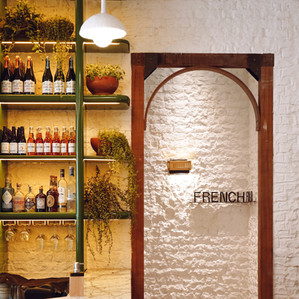The Art of Textures in Interior Spaces: Adding Depth and Dimension to Design
- circular connection
- May 13, 2024
- 2 min read
Updated: Aug 3, 2024
In the realm of interior design, where every element plays a vital role in crafting ambiance and atmosphere, textures emerge as the unsung heroes. While colors, shapes, and furniture often take the spotlight, it is the interplay of textures that adds depth, character, and warmth to any space.

Image: HW Homeworks
Textures are the tactile sensations that engage our senses, inviting us to touch, feel, and immerse ourselves in the environment. From the smoothness of polished marble to the roughness of exposed brick, each texture tells a story and evokes emotions, making spaces not just visually appealing but emotionally resonant.
One of the fundamental principles of incorporating textures into design is balance. A well-balanced mix of textures creates visual interest without overwhelming the senses. Combining contrasting textures, such as pairing a sleek, glossy surface with a coarse, matte finish, adds dynamic energy to a room. For example, a plush velvet sofa against a backdrop of weathered wood creates a captivating juxtaposition that draws the eye and sparks intrigue.

Image: HW Homeworks
Moreover, textures have the power to influence how we perceive a space. In smaller rooms, incorporating varied textures can create the illusion of depth and expansiveness, making the space feel larger and more inviting. Conversely, in vast open spaces, textures can be used to define zones and create intimate, cozy nooks within the larger area.
Image: Wallowin Interior Design
Textures also play a crucial role in establishing the mood and style of a space. A rustic, aesthetic may embrace the raw, natural textures of unfinished wood and distressed metal, while a contemporary setting might favor sleek surfaces like glass and polished steel. By carefully selecting and layering textures, designers can effectively communicate the desired atmosphere, whether it's cozy and intimate or sleek and sophisticated.
Furthermore, textures extend beyond traditional materials to encompass textiles, accessories, and even lighting. Soft, plush rugs and throw blankets add warmth and comfort to a room, while metallic accents and reflective surfaces introduce glamour and luxury. Even lighting choices, such as diffused ambient light versus focused task lighting, can create subtle textural effects that enhance the overall design scheme.
Image: HW Homeworks
In essence, the art of textures in spaces lies in their ability to engage our senses, evoke emotions, and transform a mere room into a multi-dimensional experience. Whether through the rough-hewn charm of exposed brick or the sumptuous softness of velvet upholstery, textures enrich our living environments, infusing them with personality, charm, and a sense of tactile delight.
So, the next time you're designing a space, remember to look beyond the colors and shapes—because it is often the textures that truly breathe life into our surroundings.




















